Mediterranean Diet Secrets:
Feed the body, senses & mind.
November 2021 – The Spanish Radish Blog
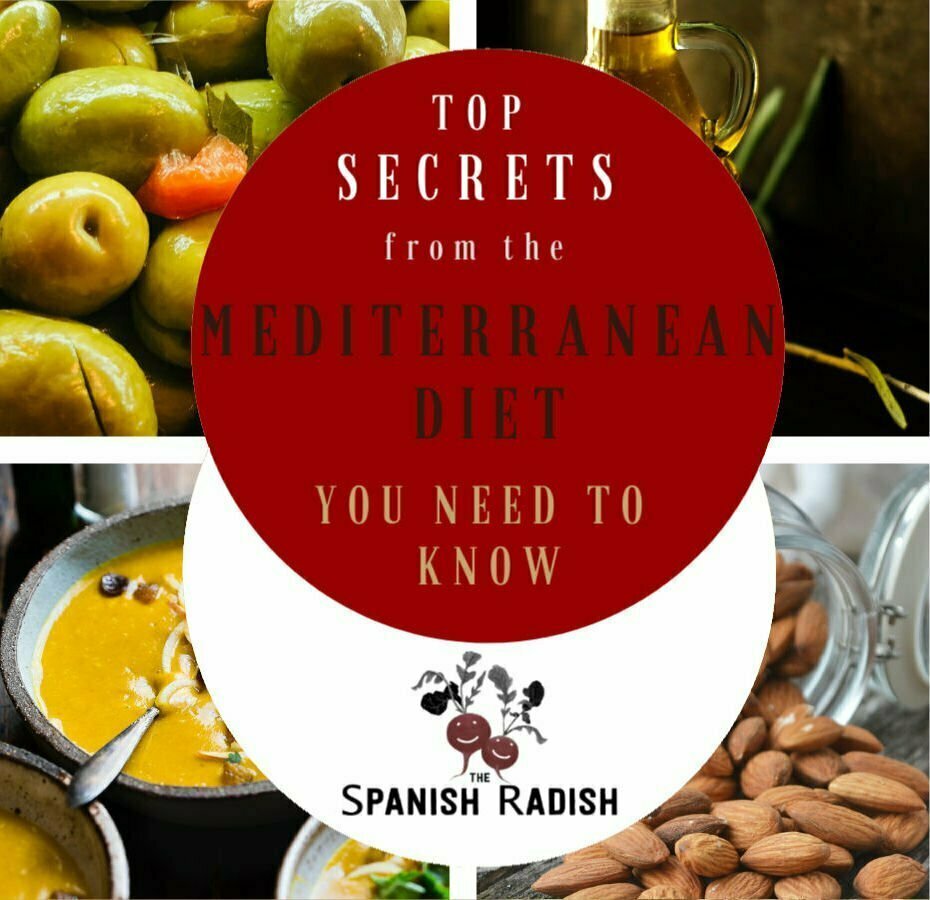
It’s no secret that the Mediterranean diet is healthy. It has been proven in numerous studies from all corners of the world, it aids weight loss, reduces the risk of heart disease and type 2 diabetes, as well as a growing list of other health benefits. But what’s most exciting is that the diet includes some incredibly tasty and simple dishes, with many a staple for most Spanish households! And a study published in 2023, found that a family of four could save around $1,500 if they follow the Mediterranean diet so it’s a win-win.
When it comes to health, perhaps the most telling of all is life expectancy. Residents based around the Mediterranean Sea such as Spain, Greece, and Italy all have around 5 years longer life expectancy compared to those from the USA. 5 years!
It’s not really a question of ‘if’ but more so why is the Mediterranean diet so healthy? And, truth be told, the answer is pretty simple!
Meal portion size
Smaller portions of varied foods (aka tapas style), fresh quality produce, lots of whole grain foods, lots of fatty and oily fish, lots of vegetables, and minimal consumption of meat are all the basic building blocks of the Mediterranean diet.
Eating smaller portions of foods from a range of balanced food groups offers excellent health benefits. Smaller portions reduce the chance of over eating, help digestion and give the body time to extract all the minerals an nutrients in the foods we eat.
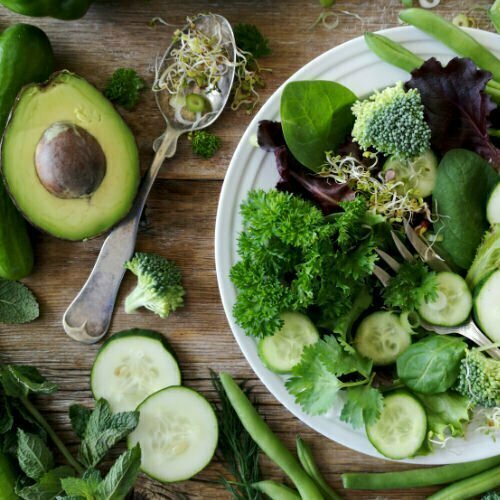
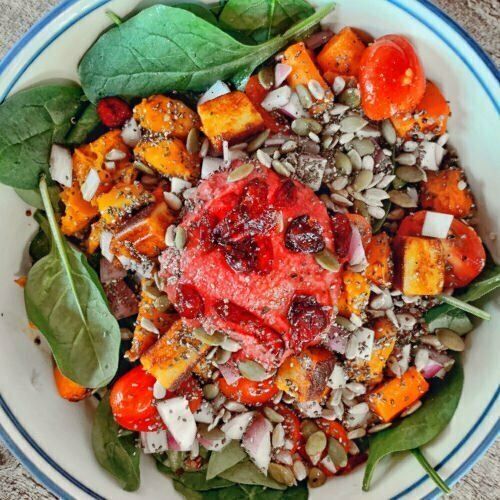
Key foods of the Mediterranean diet
Here are the main highlights of the Mediterranean diet:
- Plant-based foods form the foundation of the diet – think vegetables, nuts, seeds, fruits, etc.
- Whole grains instead of processed grains.
- Olive oil features prominently over other fats (forget butter here completely!).
- Seafood, poultry and dairy are eaten in moderation.
- Red meat is consumed in small portions alongside a balanced diet.
- Desserts are consumed in moderation and often include fruits, dairy, cheese, or natural yogurt.
- Red wine in moderation (but not essential).

Spanish Cuisine and the Mediterranean Diet
Visit any restaurant or tapas bar in Spain and the menu will usually feature an extensive range of meat, poultry, vegetables, and fish and seafood dishes. But while meat is popular, portion sizes vary dramatically. Slivers of meat are often served and it’s rare to find a steak out.
Venture inside any Spanish home and you’ll discover the cooking is vastly different to that served in the many bars and restaurants around the country. Spanish home cooking is full of nutritious ingredients and relies heavily on fresh produce.
Spanish Produce- Farm to table
Spain is blessed with fertile soil and as a result, has an abundance of locally-grown fruit, veg, and nuts. From the capital of Madrid to the smallest regional villages, all will have farmer markets that attract locals in droves to buy the freshest farm produce, eggs, meat, seafood, and bread. The food literally in most cases is direct from farm to table!
Your local fresh food market is always the best place to buy fruit and vegetables, dairy products and seafood. Always buy what’s in season and avoid buying exported produce as it will less often be fresh.
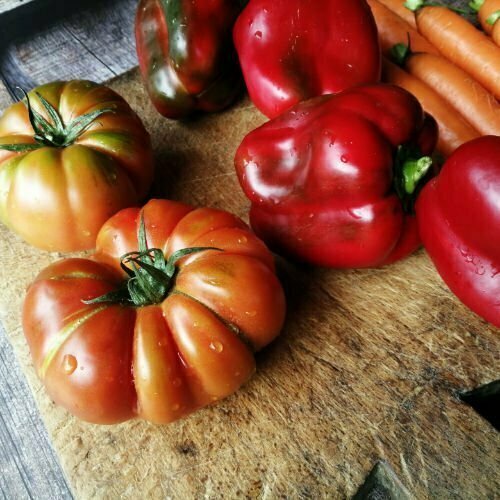
The Mediterranean diet is focused on plant-based foods
The Mediterranean diet is strongly weighted toward plant-based foods and the fruits and vegetables used in Spanish cuisine are incredibly diverse and varied from one region of Spain to another. This gives rise to plenty of interesting and delicious vegan recipes.
Common fresh homegrown produce seen throughout Spain includes eggplants, tomatoes, onions, garlic, pomegranates, courgettes, oranges, parsley, almonds, peppers, potatoes, and of course, the much loved Spanish olives.

Spain – The market garden of Europe
From the north to the south, Spain is full of fruit orchards and is a well-known exporter of fresh fruit all over Europe. The Valencian region is the orange growing capital and Spain is the worlds largest exporter of oranges with national orange exports reaching 1.6 million tonnes per year. Coming in a close second is mandarin exports which reach around 1.3 million tonnes annually.
Besides citrus fruit, Spain grows an abundance of stone fruit, grapes, and nuts too. Venture into the arid central plains and you’ll discover plentiful almond, walnut, and pistachio groves. With so much fresh produce in circulation in Spain, it’s no wonder that the Mediterranean diet is so prominent throughout Spain.

Olive oil
Of course, you cannot mention Spanish exports without the mention of olives, and more specifically, olive oil. Spain is the largest producer of olive oil in the world (by a long stretch) and most of that olive oil is grown and made in the southern Jaen region within the region of Andalusia.
It’s practically a national sport in Spain and many farms within Spain boast many accolades for the world’s finest quality olive oils. However, Spain’s enthusiasm for olive oil doesn’t stop there. One ingredient that is consistent with all Spanish cooking is good-quality olive oil, and you can’t beat Spanish extra-virgin olive oil.
On average, Spaniards consume more than 13 liters of olive oil each year. By comparison, a person in the US and UK consume around 1 liter per year.
In Spain, good-quality olive oil is uses extensively in cooking and preparation of food. It’s used to marinate, for dips, and generously drizzled on salads and pasta dishes. It is literally considered “liquid gold” in Spain, and for good reason!
Olive oil, and in particular extra-virgin olive oil, boasts a ridiculously long list of health benefits with new studies documenting even more benefits of extra-virgin olive oil every day! And, olive oil can even help you lose weight.
Health benefits of olive oil and the Mediterranean diet
Here are just a few of the proven health benefits of consuming olive oil regularly as part of the Mediterranean diet:
- Olive oil works as an anti-inflammatory
- Reduces the risk of developing dementia
- Protects against type-2 diabetes and insulin resistance
- Reduces heart problems
- Reduces high blood pressure
- Improves cholesterol levels in the blood
- Boosts your metabolism
- Aids weight loss
- Improves digestion
- Boosts hair and skin health
- Prevents against Osteoporosis
Seafood and the Mediterranean diet
Seafood is a regular staple at most dinner tables in Spain, plus seafood recipes will be on the menu at nearly every tapas bar and restaurant. It may come as no surprise that good quality fish, shellfish, and seafood is held in such high regard for the majority of the Spanish population, and some of the best seafood you’ll find right in the middle of the country! In fact, the second largest fish market in the world is (ironically) in the landlocked capital of Madrid, the largest of course is in Tokyo, Japan.
MercaMadrid is the world’s second largest fish market and feeds 12 million people per day!
If you want to follow the Mediterranean diet then eat fish at least twice a week. Fish such as mackerel, salmon, and sardines are all rich in omega-3 fatty acids are great for your health and brain. Shellfish are equally as important on the Mediterranean diet and should be consumed regularly.
Shellfish are an incredibly diverse ingredient, and all are loaded with protein and healthy fats, as well as being rich in nutrients such as omega-3 fatty acids, vitamin B12, and zinc.

Poultry and the Mediterranean diet
Poultry, especially turkey, features less prominently on most menus in Spain and is used sparingly in Spanish recipes out and at home. You’ll most often find chicken recipes include chicken pieces mixed with other meats such as rabbit or pork and used in classic paella and rice dishes such as Paella Valenciana. Turkey and duck are occasionally used, with Spanish duck dishes referencing classic French cooking methods such as Duck a l’orange.
Whenever cooking poultry, always buy from trusted source that is free range. Free-range chicken not only tastes better, it’s also healthier for you!

Red meats and the Mediterranean diet
Carnivores will be pleased to know that the Mediterranean diet can also include portions of red meat. Consuming lean beef in keeping with a healthy Mediterranean diet also improves heart health according to a number of recent studies, including one study by the American Journal of Clinical Nutrition.
Unprocessed and lean beef is a great source of high-quality protein as well as providing you with key nutrients like iron and zinc too. Consuming lean beef in a moderate portion of around 0.5-1oz. (approx. 140-280 grams) per day is a great substitute for other protein-rich foods found in the Mediterranean diet.
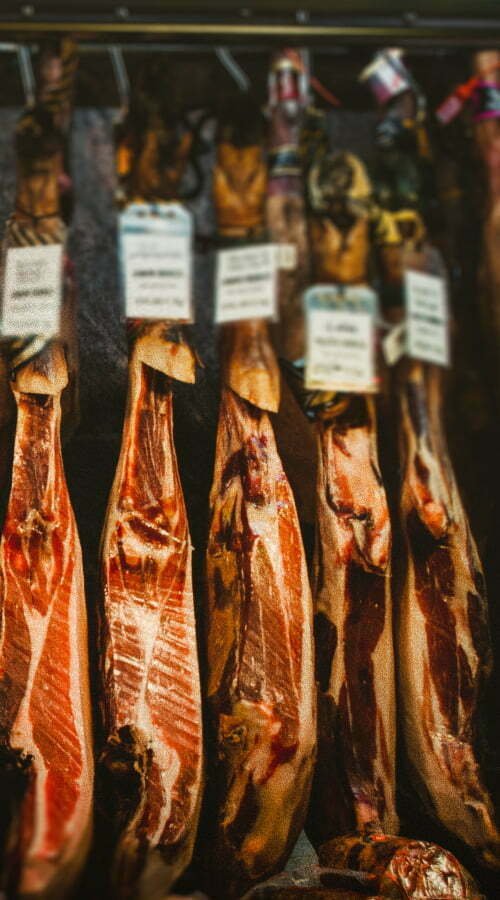
Spanish Ham (Jamón) & cured meats
Of course, Spain is known for its jamón and many other cured meats but does that mean it’s eaten with every meal? No, and that’s the secret to this traditionally healthy diet. Moderation, moderation, moderation!
Tapas dishes such as Jamón iberico or Lacón a la Gallega are excellent examples of a typical portion size for dried and cured meats. Most meat-based tapas dishes are around 100 grams or 3 ounces.
Lean high-quality beef
In Spain, good quality meat is highly regarded and found in many recipes, from the most humble stews to more elegant cuts used to create delicious meat recipes. Meat cuts are also far more versatile in most Mediterranean countries, and dishes are prepared using all parts of the animal.
Red meat portion sizes are considerably smaller in the Mediterranean diet. Around 0.5-1 ounce of meat (per person per day) is considered healthy as long as you’re not consuming other protein-heavy foods within your diet plan.

Desserts of the Mediterranean diet
Desserts are obviously a little different in the Mediterranean compared to most North American, British, and Antipodean standards. Gone are the huge tubs of ice cream or sugary sweets and instead a selection of fruit, cheese and dairy products, or sweet pastries are most often served.
This isn’t to say that fellow sweet tooths can’t get their fix once the main meal plates are put away around a dinner table in the Med. There’s plenty of ingredients that are both healthy and super tasty on offer while keeping your waistline in check!
Can you eat dark chocolate when on the Mediterranean diet?
A world without chocolate would be a very sad world indeed, and the wise folks of the Mediterranean were very much aware of this fact! Dark chocolate not only tastes great but its also rich in antioxidants and has been linked to better heart health.
Dairy
Kefir and healthy yogurts take up more space in the dairy section in supermarkets than milk. Greek styled yogurts are also very popular throughout the Mediterranean and can easily be made into a tasty dessert (or healthy breakfast) by adding a little fresh fruit, some honey or some cinnamon.


Cheese and the Mediterranean diet
When consumed in moderation, cheese is a staple in the Mediterranean diet.
Spain produces mostly hard cheeses which are either made with goat, cow, or sheep milk (or a combination of them). The cheeses often have long curing times and are aged between 3 weeks and up to a few years.
Cheese is popular in many tapas dishes in Spain like almogrote (cheese pate), blue cheese and sherry spread, or rosemary garlic shrimp with cheese. But, a traditional cheese board will often be offered after a meal as a savory dessert option. A cheese board will usually be accompanied by a sweet port, sherry, dessert wine, or a liquor. Here are five essential Spanish cheeses to get you started.

Some popular cheeses that are featured in the Mediterranean diet include:
- Greek feta cheese
- Cypriot halloumi
- Spanish mato
- Spanish manchego
- French chevre
- Israeli labane
- Italian ricotta and mozzarella.

Wine and the Mediterranean diet
Drinking while eating is a part of the culture within most Mediterranean countries. It is considered unthinkable to venture into a bar and order a drink without some sort of food (a tapa) or snack accompanying the drink order.
Table wine
Most Mediterranean countries have a more relaxed and inclusive perspective at home too when it comes to wine. Red table wine is usually between 9-11% alcohol content and is almost always on every table for lunch or dinner.
In most households, its customary to have a small glass or two with many meals, and this casual and relaxed approach to wine consumption is far better for the body when compared to other countries’ drinking habits.
Red & White wines
There are many, many excellent red and white wines in Spain. Red wine is better known for having healthy qualities while white wine still has plenty of advantages. They are both full of antioxidants and can help reduce stress hormones while you’re enjoying a glass.

The health benefits of grapes
That’s great for those of us who love the taste and sharing a glass of wine with a friend, colleague, partner, etc. If you’re not into wine, experts say don’t start just to reap these benefits. Instead, why not grab a handful of grapes and if you can find some with seeds, try and eat the seeds.
Sure, grape seeds can taste a little unpleasant and bitter and sure, they get stuck in your teeth, but they offer additional benefits than just the grape flesh and skin alone. There are plenty of grape seed supplements on the market these days but you can save your hard-earned money and eat the real deal.
Overview of the Mediterranean Diet
| Food Group | Health Benefits | Recommended Servings | Details |
|---|---|---|---|
| Vegetables | Rich in vitamins, minerals, and fiber; can help lower the risk of chronic diseases | At least 2-3 servings per day | Emphasis on leafy greens, tomatoes, peppers, onions, and eggplant |
| Emphasis on leafy greens, tomatoes, peppers, onions, and eggplant | High in antioxidants and fiber; can help lower the risk of chronic diseases | At least 2-3 servings per day | Emphasis on citrus fruits, berries, and apples |
| Whole grains | Good source of fiber and B vitamins; can help lower the risk of heart disease and diabetes | At least 3 servings per day | Emphasis on whole-grain bread, pasta, and brown rice |
| Legumes | Good source of protein, fiber, and minerals; may help lower the risk of chronic diseases | At least 2-3 servings per day | Emphasis on chickpeas, lentils, and beans |
| Fish and seafood | High in omega-3 fatty acids, protein, and minerals; can help lower the risk of heart disease | At least 2 servings per week | Emphasis on fatty fish, such as salmon, sardines, and mackerel |
| Poultry, eggs, cheese, and yogurt | Good sources of protein and calcium; can help lower the risk of osteoporosis | Moderate consumption | Emphasis on lean poultry and low-fat dairy products |
| Nuts and seeds | Good source of healthy fats, protein, and minerals; can help lower the risk of heart disease | Moderate consumption | Emphasis on almonds, walnuts, and flaxseeds |
| Olive Oil | Rich in monounsaturated fats and antioxidants; can help lower the risk of heart disease, strokes, and inflammation | Primary source of fat | Emphasis on extra-virgin olive oil |
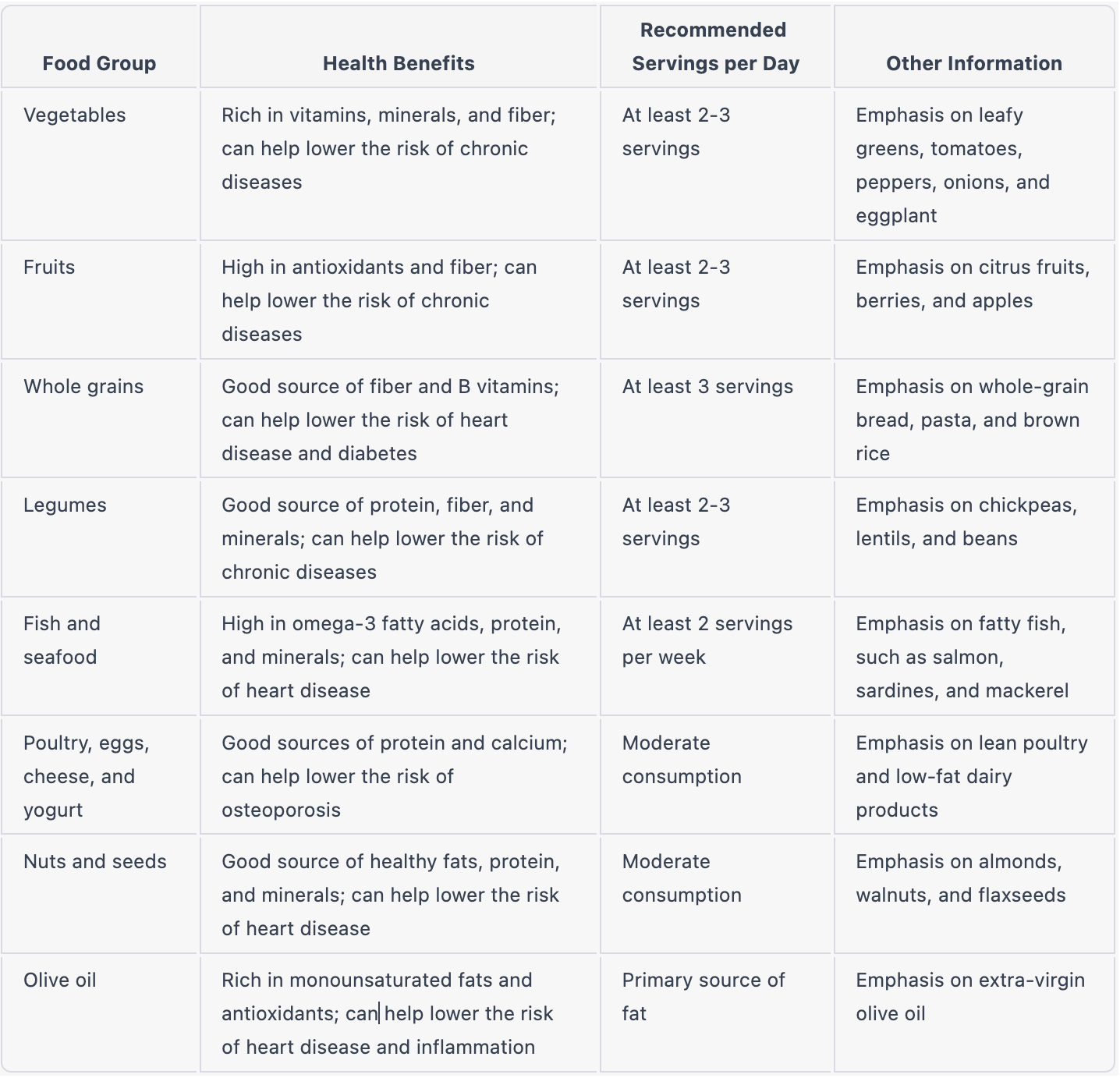
Spanish Regional Guides
Travel anywhere in Spain and you’ll discover plentiful cuisine. Delicious local dishes made using the freshest local ingredients. From the rugged coastline of the Galicia to the crystal clear turquoise waters of the Mediterranean sea. Spain’s coastline is as diverse as the seafood dishes that are inspired by generations.
Venture inland and discover vast grazing plains bordered by mountainous regions that buzz with altitude farming and rich dairy industry. Spain is a wonder of foods, and truly a foodie’s heaven!
